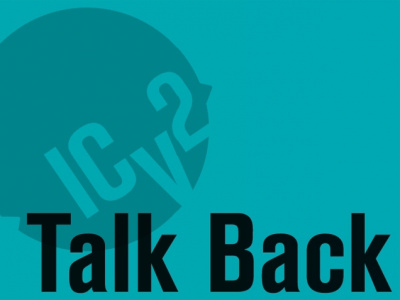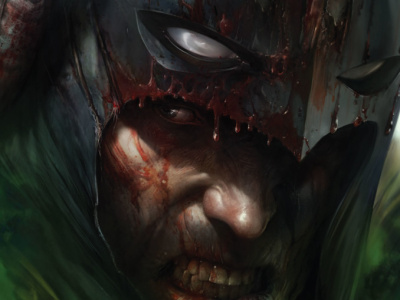Torsten Adair of Barnes and Noble (speaking for himself) saw the recent comments by J. Carmody on Marvels in bookstores (see 'Marvel Signs With Source Interlink') and offered the viewpoint of a comic collecting bookseller:
J. Carmody of Serenity Studios makes some interesting and important comments. Here are my opinions, and please remember they are mine only. If you wish to know the official word, call the corporate office of Barnes and Noble.
1) Back Issues. It is true that bookstores will not carry back issues of comic books, for the same reason they do not carry back issues of magazines. There is little demand for them, and like serial trade fiction (Harlequin, Star Trek, media tie-ins), there is a limited selling window for them (fans will buy it the week it comes out, a few sales will trickle in for the next few months, and then stop). Of course, if a book is in print but not available in the store, it can always be ordered from a website. If Interlink allows a longer period for returns, then perhaps Borders/Amazon or Barnesandnoble.com might backstock single issues online (this is already being done with the Gemstone Disney titles. Each issue of Uncle Scrooge and Walt Disney's Comics and Stories has an ISBN assigned to it, effectively making it a book, not a magazine).
When I started reading and collecting comics back in 1984, I purchased my Marvel titles from three different bookstores at my local shopping center. A year later, I made the trek to my local comic book store, and began making purchases there. I did buy a few back issues, but was never a completist, except for the Lee/Ditko reprints in Marvel Tales. Of course, nowadays, if something is worth buying back issues of, I can always wait for the collected graphic novel to come out, and usually save money.
I use Barnes & Noble's BookQuest used and out-of-print search service to find titles for my personal library, and occasionally peruse eBay as well. As a comics retailer, I would be more concerned with online retailers who make it easier to find back issues. With standardized grading, the uncertainty factor is mitigated.
2) Returns. First, an issue would have to be a major media event for a store to order a hundred or more copies of a comic book (not to be argumentative or naive, but does any single comic book store location order more than a hundred copies of a first issue?). Returns can be formulated (the usual ratio is that it takes three copies of an issue to sell one). Furthermore, having worked at one of the largest Barnes & Noble stores in the country (Lincoln Center) for five years, I have never known B&N (or any other magazine retailer) to mark down the cover price of a magazine (I suspect the margin is too slim). Perhaps Marvel might publish a special free issue or ten-cent comic exclusive (similar to the Toys R Us Cadillacs and Dinosaurs comic which promoted the television show and toys), but that is another matter entirely.
If Marvel were clever, they would publish one edition for both the Direct Market and newsstands. Marvel could use the amount allocated for the newsstand market to fulfill reorders. After the three-week window of Direct Market sales (if Marvel follows the old system of the 1980s), Marvel could then distribute copies to the newsstands. If Interlink requires whole copy returns, the returns can either be channeled back into the Direct Market or repackaged and sold to toy stores and discount chains (doubtful, as it is much easier and cheaper to just send back the stripped cover).
As a comic book collector, I'm for anything which makes comic books more visible. I myself bought my first comic books at a grocery store. When I discovered that there was a store specializing in comic books, I walked the two miles, and bought a month's worth of comics! Twenty years later, I'm doing everything it takes to get comic books into a customer's hands, even if it means I send them to another retailer (Thank you, Jim Hanley!).
Comic books are like wine. You can pick up a bottle at your local grocery store and trade expertise for price and convenience, or you can go to a wine or liquor store and become an oenophile. Drinkers of wine fall into three categories: those who like a glass of wine every now and then but don't really care about vintage, those who drink it socially and decide to cultivate their knowledge without being obsessive, and those who are introduced to fine wine by an oenophile and are seduced into the hobby.
Newsstands, libraries, and bookstores serve two markets: the casual reader and the customer who avoids comic book stores. The casual reader is difficult to entice unless you have a location with a lot of foot traffic. The customer who avoids your shop can be enticed by making your store more welcoming (clear the windows of posters, install carpeting, offer seating for drag-along parents). You can entice the casual reader to go out of his or her way by fostering 'moles' at bookstores who will recommend your store, donating (and selling) books to libraries, and by engaging in outreach (such as handing out free comics and fliers at movie theaters showing comic book movies).
J. Carmody is right. Adapt and change and survive, or find a different line of work. Barnes & Noble once had only one location, in a city filled with bookstores. Much of their success came from copying what others did (cafes, discounting, superstores, website) and doing it better (location, service, selection). Barnes & Noble consolidated bookstores and video game stores (GameStop); Blockbuster consolidated video stores. Who's to say it can't be done with comic books?







